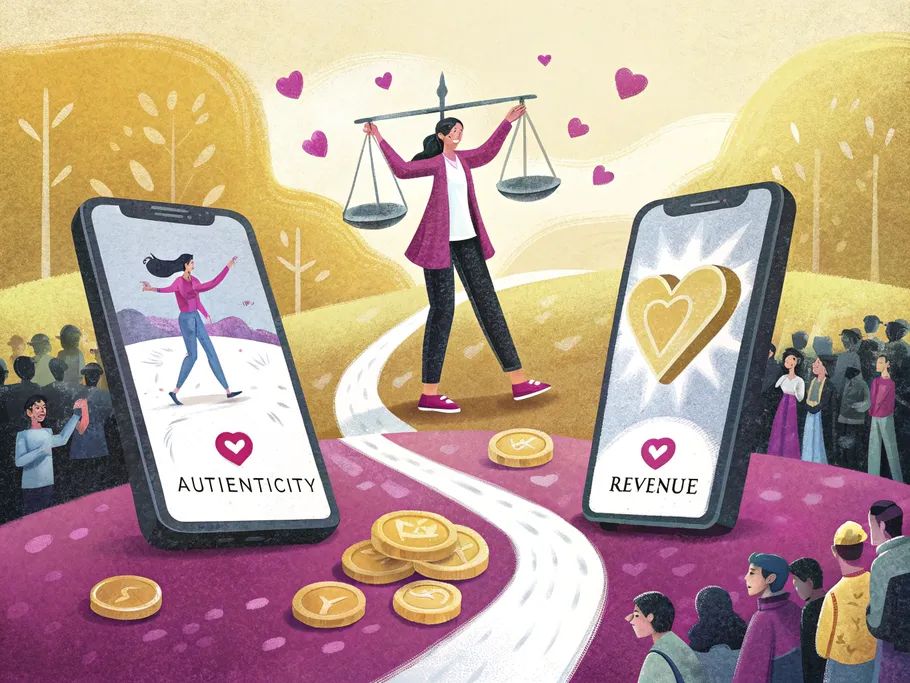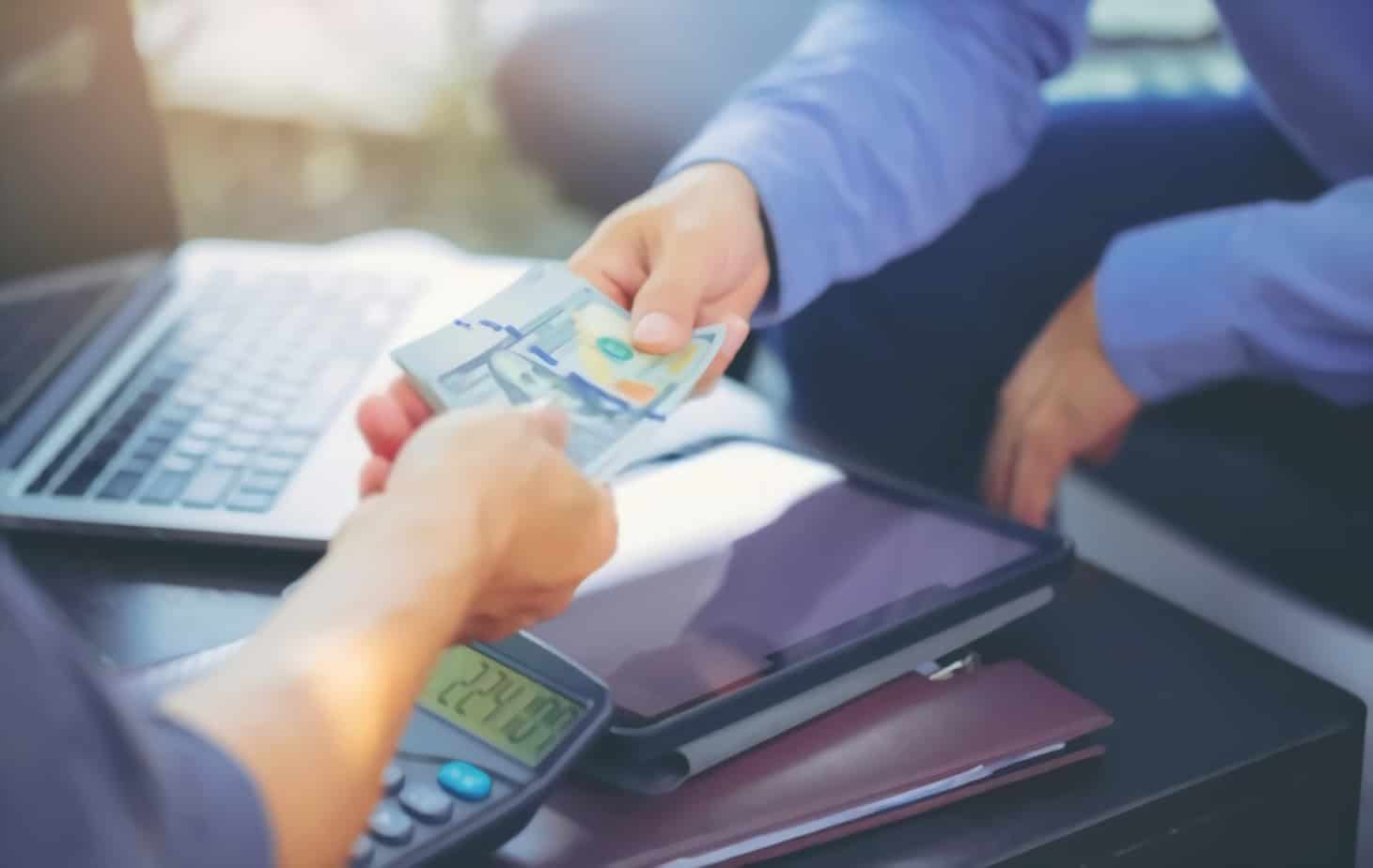Instagram Paid Partnership: How to Add It to Posts, Stories & Reels


Ever been scrolling through your feed, saw that little “Paid Partnership” tag under a creator's name, and thought, “…what the hell does that mean?”
If you’ve been wondering what the deal is with branded content on Instagram, you’re in the right place. We’re about to break down what that label means, why it exists, and how you can get a piece of the action.
Let’s get into it.
When you see a post with the “Paid partnership with [Brand Name]” label, it’s exactly what it sounds like: the creator who made the post collaborated with the partner account and was compensated for it. It’s a transparent way of saying, “Hey, I got paid to show you this.”
For example, in the post below, the influencer @danmaniel partnered with @getolympus. That little tag makes it clear this is a piece of sponsored content.

This feature officially rolled out in June 2020, initially for a small group of brands and creators. Instagram’s goal was to bring some much-needed clarity to the world of sponsored posts. By November of that year, the feature was available to everyone, giving all accounts access to the insights that come with it.
Let's be real, the main driver was the Federal Trade Commission (FTC) cracking down on shady advertising. For years, the lines were blurry, and the FTC decided it was time for influencers and brand ambassadors on Instagram to stop playing coy about being paid.
The FTC, in a stunning display of closing the barn door after the entire internet had already bolted, demanded that these digital tastemakers actually disclose when they're getting paid to shill products. This was a direct response to the explosion of influencer marketing, where brands realized they could get massive exposure by tapping into a creator's audience.
And the potential is huge. Studies show that for every $1 spent on influencer marketing, brands can see an average return of $11. But with great power comes great responsibility—and hefty fines.
The FTC isn't messing around. Non-compliance with their endorsement guides can lead to penalties of up to $53,088 per violation. Suddenly, that little “Paid Partnership” tag isn’t just about transparency; it’s about avoiding a massive financial headache.
This feature makes it simple for everyone to follow the Instagram paid partnership guidelines, ensuring brands and creators maintain trust with their audience and stay on the right side of the law. Because nothing says “authenticity” like a tiny hashtag on a sponsored post, right?
So, what’s in it for everyone? This little tag does more than just keep the FTC happy. It’s a surprisingly useful tool that creates a more open exchange between brands, influencers, and the audience.
As an influencer, the rule is simple: if a post is sponsored in any way—even if it's part of a larger deal and not a one-off payment—you should be using the Instagram paid partnership feature. It’s all about transparency. Before you post, make sure the terms are crystal clear and agreed upon by both you and the brand. A solid agreement upfront prevents headaches later.
Now, let's break down who gets what.

For brands, the paid partnership feature is your direct line to the data you need to justify your marketing spend. It’s how you check if the influencer you hired is actually delivering.
You get access to key performance insights for the branded content on Instagram you're paying for.
This data helps you figure out which influencers are a good fit for your products and which campaigns are actually working. It allows you to make smarter decisions for your future Instagram marketing campaigns and estimate the ROI you can expect from each creator.
Heads up: Brands only get a 14-day window to see the performance metrics for story posts. So, you need to be on the ball.
But the best part? Control. You can toggle on the “Partner Approval” setting on Instagram. This means you can approve or reject any tagged post before it goes live, ensuring every piece of content aligns with your brand’s standards.

Alright creators, this is for you. The Instagram paid partnership feature is your best friend for building real, lasting trust with your audience.
Think of it this way: a storyteller who reveals the loom, showing the audience the very hands that weave the narrative, forges a much deeper trust than one who relies on mystery. By being upfront about sponsored posts, you're showing your audience that you respect them. That honesty is what builds a loyal community.
Beyond the good vibes, there are practical perks:
And what about the audience? Does this feature do anything for the people scrolling?
Instagram would tell you it’s all about keeping you in the loop. But let’s be real.
It’s about transparency, sure. But nothing screams “genuine, heartfelt recommendation” quite like a legally mandated disclosure, does it?
Ultimately, the what is Instagram paid partnership tag gives you, the audience, a clear heads-up. It lets you know when a post is an ad versus a personal recommendation, so you can engage with it on your own terms. It’s a small dose of honesty in a very curated world.
Alright, let's get down to business. If you're a creator with a Business or Creator account, you're ready to start using the branded content on Instagram tools. But first, you have to flip the switch.
Think of it as unlocking a secret level. It’s a simple, one-time setup that tells Instagram you’re ready to play the partnership game.
Go to your profile, tap the menu (the three lines in the top-right), and hit Settings. From there, navigate to Account and tap on Branded Content. Once you've enabled the necessary settings here, you're good to go.
Now, let's walk through exactly how to add paid partnership on Instagram for every content type.
Yes, a brand can absolutely put ad spend behind a paid partnership post, but there’s one crucial catch.
The creator must enable the "Allow brand partner to promote" option before they publish the post, story, or reel. If they don't click that one little button, you've just paid for a nice piece of content on their feed, not a high-powered ad for your brand.
So, if you're a brand, make this a non-negotiable part of your agreement. Remind the influencer to check that box. When they do, it’s a win-win. The brand gets to amplify the content to a massive, targeted audience, and the influencer gets the added credibility of being featured in a larger ad campaign.
This is the million-dollar question, isn't it? Getting paid for an instagram paid partnership depends entirely on the agreement you hammer out with the brand.
There’s no single pay stub. Compensation can look like:
While it's tempting to think every influencer is rolling in cash, the reality is more nuanced. Influencers with 10,000 to 50,000 followers might earn between $100 and $500 per post, while those in the 50,000 to 200,000 follower range could command $500 to $2,000. However, a 2023 study revealed that nearly half of all creators (48%) earned $15,000 or less annually from their work, showing that many partnerships are built on more than just cash.
If you’re looking to get into branded content on Instagram, don't just sit back and wait. Approach brands you genuinely admire and be ready to negotiate a fair deal. Do your research, trust your gut, and only work with companies you believe in. That authenticity is what will make the partnership valuable for you, the brand, and the audience you've worked so hard to build.

Whether you’re a brand trying to navigate the world of branded content on Instagram or a creator figuring out how it all works, we’ve got you covered. Here’s a no-bullshit guide for both sides of the coin.
Congratulations, you’ve bought your way into the Instagram partnership circus. Before you do anything else, it's time to seize control.
Step 1: Turn on Partner Approvals
This is your quality control. It lets you micromanage the creators you’re paying to pretend they like your stuff.
Step 2: Get Notified
Once a creator tags you and the campaign goes live, you’ll get a notification through Facebook and Instagram. If it's a Story, you'll get an Instagram Direct message. This is your cue that the content is out in the wild.
Step 3: Obsess Over the Insights
As soon as the content is live, you can view the organic insights in the “Branded Content” tab in your Facebook Page Insights or via Facebook Business Manager.
But here's the fun part: while insights for feed posts last forever, the metrics for Stories (reach, taps, replies, etc.) vanish in just 14 days. It's a fleeting glimpse into your ROI, a constant reminder of your brand’s desperate need for validation. So, grab that data while you can.
Alright, creator. Your side of the process is all about clarity and communication. Learning the steps can feel like a lot of small details, but it's okay to go through them slowly. Each step you master brings you closer to seamless, professional collaborations.
Tagging a Business Partner in a Feed Post:
Tagging a Business Partner in a Story:
It’s just a few extra taps, but getting this right is what builds trust and makes the entire Instagram paid partnership process work smoothly.

Being clear and open, even in seemingly small ways, can create a stronger foundation for what you are building. Using the Instagram paid partnership tag is one of those small ways that builds trust with your audience.
It also unlocks powerful tools for the brand, giving them post insights and the ability to turn your awesome content into a high-performing branded content ad.
Here’s exactly how to do it:
For an Instagram Story, the process is similar. Just tap the link icon (between the filters and stickers) on the editing screen. This will take you through the same steps of tagging your partner and allowing them to promote.
But here’s the catch: If you use interactive elements like hashtags, polls, quizzes, or GIFs in your paid partnership story, the brand cannot turn it into a branded content ad.
Apparently, your sponsored content becomes too 'authentic' and 'engaging' to be properly corporatized into an advertisement. What a tragic loss.
Once you’ve followed these steps, the brand is empowered to boost your post, and you’ve maintained transparency with your audience. Everybody wins.
Beyond just following the rules, why are creators genuinely excited about the Instagram paid partnership feature? It turns out, this little tag is more than just a label; it’s a key that unlocks real opportunities.

When a brand gets access to your post insights, your value skyrockets. It proves your worth and opens the door for more collaborations. But the real money isn't just in the post fee; it's in selling the usage rights when they turn your post into a branded content ad.
Many creators leave money on the table here. Industry standards suggest you should charge an additional 20-30% of your base rate per month for these rights, with some deals justifying up to 50%. By not negotiating for this, you're undervaluing your work. This tag is your gateway to earning more money by treating your content like the valuable asset it is.
Using the paid partnership label is your first line of defense in complying with advertising law. It’s a clear, unmistakable disclosure.
Does this mean you can ditch the #ad in your captions? The FTC’s guidelines are still a bit murky, so the safest bet is to use both for now. Think of it as wearing a belt and suspenders—it might feel like overkill, but you're guaranteed to keep your pants on.
As a creator, your work holds significant value for both brands and Instagram. You keep users engaged and provide the eye-catching content that fuels their ad campaigns.
Recognizing the impact of your unique contributions can be a quiet source of strength. This feature is a formal acknowledgment of your role in the ecosystem. Keep bringing your vision to life, knowing it truly makes a difference.
Let's be honest, influencer marketing isn't going anywhere. It's a glorious, endless tide of people selling things to other people.
The wise don't fight the rising tide; they learn to navigate its depths. The Instagram paid partnership feature is your boat.
Whether you're a brand or a creator, understanding how to use this tool is no longer optional. It’s about navigating this new reality with transparency, professionalism, and a clear understanding of the rules. Now you have the map.
While these strategies are proven to work, every account is unique. Get a personalized audit that analyzes your specific account data and provides tailored recommendations for growth and monetization.